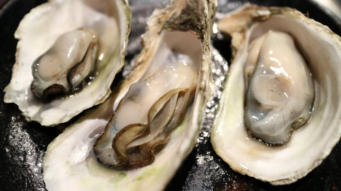The Local Oyster Industry

Southend Timeline Southend-on-Sea © 2009 - 2024. All Rights Reserved

c1700.
A
fisherman
named
Joseph
Outing
discovered
by
accident
that
the
foreshore
of
the
adjoining
manor
of
Southchurch
was
good
feeding
and
fattening
ground
for
oysters.
He
secured
a
lease
of
part
of
the
that
foreshore
and
started
what
soon
was
to
become
a
prosperous
local
industry
in
oyster
cultivation.
The
first
group
of
buildings
near
the
shore
at
Southend
were
the
huts
erected
by
Joseph Outing for the use of his men and for the storage of their gear.
For
centuries
the
oyster
has
been
associated
with
Essex.
As
early
as
1434,
Chalkwell
Manor
was
granted
the
right
to
maintain
the
oyster-beds,
and
cultivation
continued
until
about
1890.
Prior
to
the
eighteenth
century,
how
ever,
there
was
little
or
no
real
scientific
application
to
their
cultivation
in
Essex
waters,
but
early
in
that
century
Colchester
began
to
give
thought
to
the
possibilities.
Local
cultivation
at
Southchurch
began
by
mere
chance
when
a
fisherman
named
Joseph
Outing
threw
overboard
some
small
oysters.
Later
he
discovered
that
they
had
thrived
and
had
gained
much
in
size.
He
experimented
and
came
to
the
conclusion
that
cultivation
was
worth
while
at
this
site,
so
obtained
a
lease.
Outing
did
well
and
his
success
was
followed
by
that
of
other
men
along
the
foreshore.
As
a
result
of
continually
improving
methods
of
cultivation,
they
prospered.
Demand
was
considerable
with
the
result
that
large
quantities
of
young
oysters
had
to
be
imported
from
other
parts
of
England,
and
from
the
north
west
coast
of
France
in
order to maintain the Southchurch beds.
The
Essex
oyster
trade
reached
such
dimensions
in
the
north
bank
of
the
Thames
that
it
aroused
the
envy
of
the
oyster-men
in
Kent.
Rivalry
concerning
estuary
oysters
had
persisted
then
for
some
time.
In
1724,
a
great
raid
was
made
on
the
“South
End”
oyster
beds
by
five
hundred
fishermen
from
Milton,
Queensborough
and
Faversham,
headed
by
Capt.
Evans,
M.P.,
Mayor
of
Queensborough,
in
a fleet of sloops and small craft, in endeavour to force their claim that the beds were public property.
Local
Magistrates
mustered
all
the
parish
constables
of
the
Rochford
Hundred,
and
through
reading
of
the
Riot
Act
on
the
beach,
there
was
fortunately
no
violence.
During
the
next
ten
or
eleven
days
the
Kentish
men
set
to
work,
in
consequence
of
which
the
beds
were
seriously
depleted
and
damaged.
On
one
day
alone,
five
large
sloops
of
this
Kentish
Armarda
carried
off
full
loads
of
oysters
to
sell in London.
In
the
following
year
three
actions
for
trespass
were
brought
against
the
raiders
–
the
first
by
Outing,
a
second
by
William
Hutton
of
Leigh,
and
the
third
by
another
person
holding
a
lease
of
the
foreshore
off
Southend.
The
first
two
actions
were
held
at
Brentwood,
when
Outing
and
Hutton
were
awarded
damages
and
costs.
The
local
oyster-men
also
won
the
third
case,
which
was
heard
at
Westminster.
The
raid
of
the
Kentish
Armada
cost
the
Kent
men
more
than
£7,000,
but
the
result
settled
beyond
any
doubt
the
rights
of
the
north
coast
oyster-men.
The
private
fisheries
of
the
Essex
coast
were
developed
and
the
foreshore
opposite
Southchurch
and
Old
Southend
provided important fattening grounds.
In
1770,
extensive
oyster
beds
were
laid
at
Milton,
and
although
these
were
abandoned
about
1830,
cultivation
continued
at
Southchurch
until
about
1895.
By
then,
ceaseless
dredging
had
rooted
out
the
oysters
until
only
two
banks
of
any
great
size
survived
in
the
Rochford
Hundred,
one
on
the
River
Crouch
and
the
other
on
the
River
Roach.
The
contamination
of
oyster-beds
through
sewage seriously affected the trade, and gradually caused the extinction of the industry off Southend.

Southend-on-Sea


Website Info:

Southend-on-Sea’s No 1 History Website! Documenting The Town & The Townspeople
Now Incorporating The Sea Of Change Website


SOUTHEND CITY
Chalkwell ▪ Eastwood ▪ Leigh-on-Sea ▪ Prittlewell ▪ Shoeburyness ▪ Southchurch ▪ Thorpe Bay ▪ Westcliff-on-Sea
































































